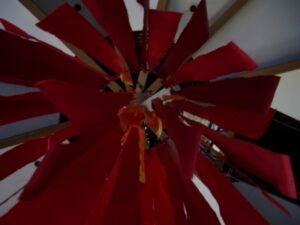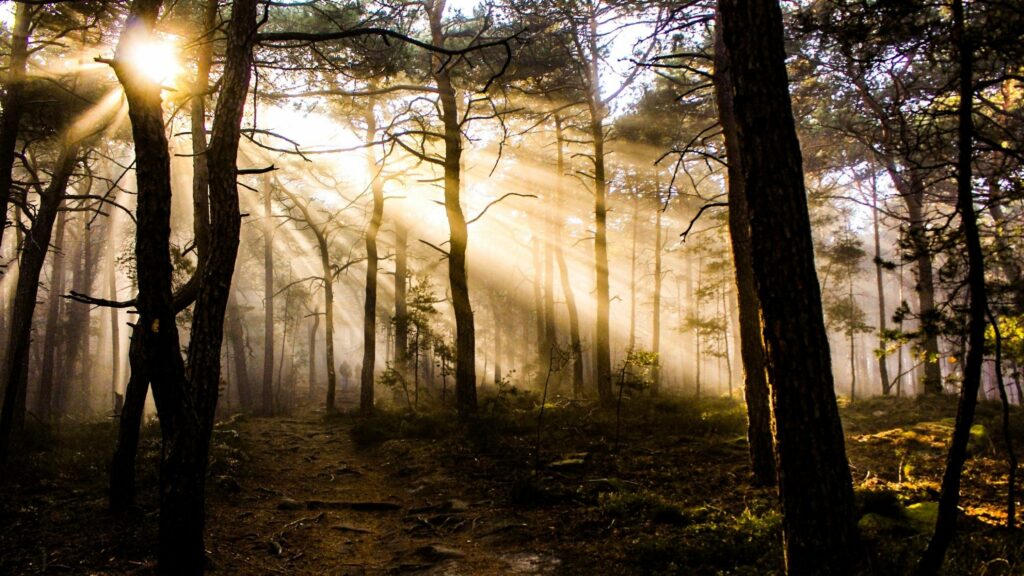
Catechists for initiation know well that they need to introduce newcomers to the fullness of the Christian calendar. Yet, depending on their own formation, they may not really “live into” the liturgical year very deeply themselves. If this is the case, the presentation of the liturgical year, despite good intentions, may be fairly weak. It’s a sign of trouble when a catechumenate team focuses on secondary celebrations, such as Divine Mercy Sunday, or pious customs that are not based in the liturgy, such as honoring Mary during the month of May, while ignoring or taking for granted the great seasons and feasts that structure the liturgical cycle.
An Example: The Easter Season
Take the season of Easter. It’s a splendid season. 50 days of rejoicing! The great “week of weeks” plus one day! A lectionary brimming with resurrection appearances and the awe-filled experience of the early Church! Alleluias wreathing the music with joyful praise! Sprinkling with water! Renewal of baptism! The paschal candle lighted in our midst! Yet we plod along, mostly oblivious, our lives not conspicuously more joyful or alleluia-filled than they are the rest of the year.
A close look at the 50 days reveals that the many feasts of the Easter season are wonderfully related to one another. Most people “get” the parallel with the chronology of Luke-Acts: forty days after Easter, Jesus ascends into heaven; fifty days after Easter, the Spirit is given. Even when Ascension is transferred to the nearest Sunday, the notion of a narrative unfolding in our calendar, recalling these events in sequence, is pretty firmly planted in our minds. Yet there’s more to it than that.
Just as the Jewish celebration of Passover provides essential background to understanding the Christian celebration of Easter, so the Jewish feast of Pentecost (which the disciples in Acts were celebrating when the Spirit came upon them) supplies a wonderful interpretive key to the Christian celebration of Pentecost. The Jewish Pentecost was a celebration of the covenant on Mount Sinai, fifty days after the deliverance from Egypt. This becomes another thread in the fabric of the Easter season: the journey from slavery to freedom to covenant: the life of commitment to God within the People he has called. What could better describe the trajectory of Christian initiation?
Just as a fruit bears the seeds of new plants within it, so Pentecost is filled with hope and promise. The world of nature around us helps us to remember and celebrate.
The Importance of Pentecost
The Christian people have shaped the celebration of Pentecost to reflect their own deep sense of what the covenant in Christ’s blood really means. Those who believe in Jesus are gathered in the Spirit in order to be sent out again, fearless and full of joy, to bring the good news to the world.
Resonances of the theophany at Sinai are embedded in the Pentecost story: wind, fire, “a loud sound.” Theologian J.M. Tillard called Pentecost “the theophany of the new covenant” which reveals the Church in its most essential features: a people filled with the Holy Spirit, gathered to hear the apostles’ preaching, transcending barriers of language and race, caught up in joyful praise and thanksgiving, and boldly proclaiming what God has done in Christ.
Sound like Eucharist? It should. Because—surprise!—the Eucharist is full of the glory of Pentecost. The whole season of Easter comes to its fruition here.
Have we forgotten, or never learned, that the mystery of Pentecost is essential to what Eucharist celebrates? Could this be because our default setting for Eucharist is imbued with a “Good Friday” spirituality, and we haven’t really absorbed the full impact of what the Church celebrates throughout the Easter season?
Mystagogy on the Easter Season
A friend of mine who recently moved to Spain tells me that the Catalan term for Easter is Pasqua florida, or “flowering Easter,” whereas the term for Pentecost is Pasqua granada, which means “mature or ripe Easter.” What a wonderful mystagogy on the Easter season is expressed through these two terms! Nature gives us a clue as to how this season progresses: As flower is to fruit, so Easter is to Pentecost. Easter is a time of new life, but the fruit of that new life is experienced through the outpouring of the Holy Spirit, who casts out our fears and sends us into the world to spread the gospel. Just as a fruit bears the seeds of new plants within it, so Pentecost is filled with hope and promise. The world of nature around us helps us to remember and celebrate.
The Easter season is a time of mystagogy for the neophytes. But if we do not immerse ourselves in the season of Easter itself, we may miss some of the most wonderful “cues” for faithful living that the liturgical year has to offer.












Felicidades, he encontrado un sitio que me da la oportunidad de profundizar mas en temas tan importantes para la ampliación de mis temas y de propio conocimiento del Rica, mil gracias y que Dios les bendiga, tienen temas muy claros que son profundos, pero que están redactados con sencillez y claridad.